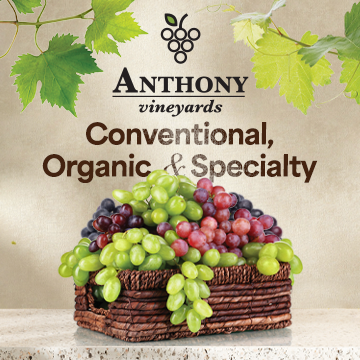CARPINTERIA, CA - We are now in the mid weeks of summer, and Westland Produce Inc. is seeing rapid growth of its hydroponic living lettuce crop. Though the company grows year-round, this is the time of long daylight hours that the produce responds to.
David Van Wingerden and his father Jerry Van Wingerden are the most recent of 15 generations of growers spanning from California to Holland. David, President of Westland Produce, Inc., took the time to tell me how this company made the leap from floral to produce, and eventually a vested interest in hydroponic growing.
 David Van Wingerden, President, Westland Produce Inc.“Hydroponic vegetables is a growing category with a hot market,” David tells me, explaining that the family decided to diversify its crop by going into produce, and has been growing hydroponically in California for over 20 years. “Hydroponic lettuce is a very sustainable, high quality and high value item. It’s absolutely worth it.”
David Van Wingerden, President, Westland Produce Inc.“Hydroponic vegetables is a growing category with a hot market,” David tells me, explaining that the family decided to diversify its crop by going into produce, and has been growing hydroponically in California for over 20 years. “Hydroponic lettuce is a very sustainable, high quality and high value item. It’s absolutely worth it.”
Hydroponic growing means that the lettuce spends its entire lifecycle in the water. At Westland in particular, the lettuce is grown directly on top of a 12 inch water bath, which David tells me is a method the company chose in order to grow higher quality produce at a reasonable cost. Now, residing in California, the first thing I can’t help but say is that this sounds like an awful lot of water.
The answer was surprising.

“While some water is used to fill the baths initially, on a regular basis we're only using about one-and-a-half feet of water, per acre, per year,” David said. In fact, because of the lack of soil and controlled environment, the only water used is that which goes directly into the plants.
The result? According to David, Westland is able to use over 80 percent less water and fertilizer than outdoor farms, while producing about 15 to 20 times more lettuce, per acre, per year. With daily monitoring of fertilizer and water, as well as testing for any possible water contaminants and regular disinfecting, the company is able to ensure the plants grow in a safe and healthy environment.

David also explained that because the living lettuce is grown in water instead of soil, it doesn’t have to struggle for its nutrients. “In my opinion, this is what yields higher quality vegetables,” he tells me. “The plant is able to uptake more nutrients with less work.”
As for my burning curiosity about the drought, David laughs at my hesitation. “The drought is a funny question, because growing hydroponically, we have always conserved and recycled water."
Though Westland grows year-round with steady production and pricing, right now is the high time for the lettuce growth rate. With long sunny days providing maximum nutrients and growth, David said that Westland is seeing anywhere from three to four weeks from transplant to harvest, as opposed to the five to six weeks it would see in the winter time.
Right now the company produces:
- Butter lettuce
- 3-in-1 medley of green, red oak, and red leaf
- Red butter lettuce
- Upland Cress

“Between all those we produce about 1.2 million heads per acre, per year,” David said, and with various packaging options available to keep prices both competitive and affordable. “Hydroponic tends to be a bit more expensive, but also better quality, nutrition, and yield.”
Westland offers traditional clamshell packaging, as well as bulk lettuce for foodservice. Everything is sold with the roots still attached in order to prolong shelf life to about three to four weeks, with orders now available.
Companies in this Story
Westland Produce
The past 20 years growing hydroponically, Westland Produce has decades’ worth of experience and enthusiasm.






